Most humans try to avoid conflict as much as possible, but novelists love conflict. Without conflict, a novelist has no story. Conflict keeps your novel moving forward and your readers turning pages.
As Vladimir Nabokov once said, “The writer’s job is to get the main character up a tree, and then once they are up there, throw rocks at them.”
How do you get your protagonist up a tree? What kind of rocks should you throw?
Angela Hunt is a pro at chasing a protagonist up a tree. She’s a Christy Award-winning novelist with over five million copies sold.
Six Classic Conflicts
The six types of story conflict are so old that they’re almost new again. It’s like an old joke that a whole generation of people have not heard. I have a theory that writing teachers do not want to teach the six conflicts because they can’t talk about the classic story conflicts without using gendered language.
These conflicts are in three couplets, and each couplet could be considered one of the three primary colors of story conflict. With these three primary conflict couplets, you can create many different “colors” of conflict in your stories.
The First Conflict Couplet: Man vs. Man & Man vs. Himself
Conflict 1: Man vs. Man
Man vs. man is the classic form of story conflict. From Cain versus Abel to Iron Man versus Captain America, this man vs. man conflict is probably the most common in literature right now.
What about the conflict between men and women in romance?
Thomas Umstattd, Jr.: How does man vs. man work in a romantic context?
Angela Hunt: Romance almost deserves a category of its own.
Years ago, there was a popular book called Men Are From Mars, Women Are from Venus. Men are so different from women, and they don’t know quite how to deal with women. Women get frustrated because men aren’t like women, but they really wouldn’t want them if they were. It’s not quite man vs. man because women are not men.
There’s a different focus on strategy for conflict in romance novels, but it’s classic. The basis of every romance is that they don’t immediately fall in love. There’s an attraction, but those not-me qualities repel them. There’s conflict all over the place.
Thomas: The opposites-attract trope is common in romance. We eventually come to appreciate the differences between the two genders, and their differences are attractive to each other. They make men and women simultaneously compatible and incompatible, which leads to wonderful conflict.
Conflict also leads to wonderful comedy. Many romances are ultimately derived from the play Much Ado About Nothing. I have a theory that most romance plot archetypes are either Beauty and the Beast or Much Ado About Nothing.
In the Much Ado About Nothing plot, you have two different couples. One couple is fighting, fighting, fighting, and finally gets together. The other couple is together, and they start fighting, fighting, fighting.
It ends up being a cultural drama that ultimately gets sorted out, and the characters live happily ever after. It’s a comedy, not a tragedy.
Angela: Isn’t that the exact same plot for The Taming of the Shrew?
Thomas: Once you see an archetypal plot, you start to see it everywhere. Once you understand how the hero’s journey works, you’ll constantly see it in the books you read.
Angela: It’s also When Harry Met Sally. Remember the two couples? One of them got married.
Thomas: The pitch for When Harry Met Sally must have been, “Let’s retell Much Ado About Nothing by Shakespeare. It’s a guaranteed hit, but nobody in America has read it. Let’s change the characters’ names and update the language, and no one will realize it’s actually Shakespeare.”
Many famous movies are actually Shakespeare, including The Lion King and West Side Story, but they’re contextualized for an American audience.
Biblical Examples of Man vs. Man Conflict
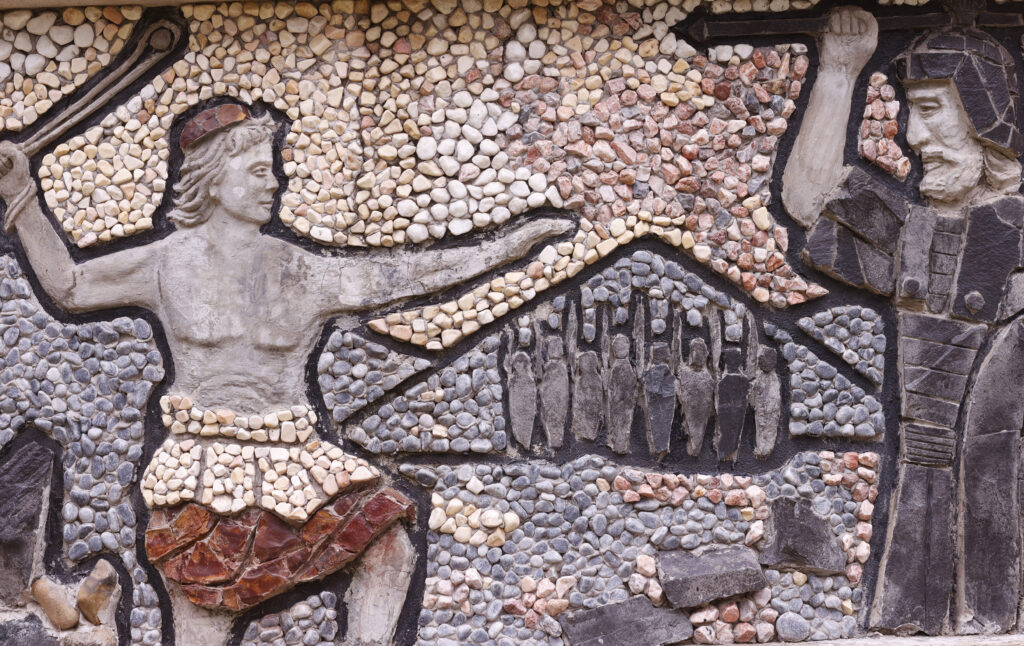
We often think about man vs. man as a direct conflict, as in David and Goliath, where David’s goal is diametrically opposed to Goliath’s. But that’s not always how the man vs. man plot plays out.
Think about Cain versus Abel. Abel had nothing against Cain. In fact, Abel didn’t even know he was in a man vs. man plot. From his perspective, Cain just sneaked up and killed him. There’s only one antagonist, and the other character is going about their business in a normal way.
Another example from Scripture is Josiah versus Pharaoh Necho. It’s a Cain versus Abel story that’s flipped. Josiah is the anointed one who’s brought the kingdom back to God. He’s the first righteous king Israel has had in a long time, and this pagan wants to march through his lands. So, Josiah sends a delegation to Pharaoh Necho, saying, “Don’t march through my lands.”
But Pharaoh Necho says, “God has called me to go to war with the Assyrians. Don’t get in the way of what God has called me to do.”
Josiah’s thinking, “You’re a pagan. Why would God talk to you? I am the anointed king.” So, Josiah goes to war with Pharaoh Necho.
It turns out that God really had called this pagan king to do something. God can talk to pagans. Just because you’re the righteous king doesn’t mean you’re right about everything. Nor does it mean you know what God is up to. God is doing all kinds of things you don’t know about.
Josiah dies in that battle because Pharaoh Necho had a mission from God to go to war with the Assyrians, and God wasn’t going to let his anointed king get in the way of his plans.
That was an unnecessary conflict. Josiah could have said, “Okay, Necho, I won’t get in the way of God’s plans. You can march through.”
But since Necho said, “I have no conflict with you, Josiah. I don’t care about you. I care about this mission from God to fight the Assyrians.” But Josiah wanted the fight, and it only takes one side to make a fight.
Angela: I’m surprised Josiah didn’t remember that he was almost in the opposite situation of the children of Israel who needed to walk through the land of the Amalekites to get to Canaan, where God was leading them after the exodus. The Amalekites said, “No, we won’t let you.”
The Israelites said, “We’re not going to bother you, drink from your wells, or take your cattle,” but the Amalekites refused, and there was a big battle. Of course, the Israelites won because they were following God.
What’s the difference between a villain and an antagonist?
Angela: We’re hedging around the difference between a villain and an antagonist.
For instance, in a thriller or murder mystery, there is a definite villain. But sometimes, you have an antagonist. Cain was jealous of Abel, and he had a fit of temper. In our day, he probably would have been charged with manslaughter depending on how premeditated it was. I don’t know that he was a villain per se, but he was definitely an antagonist in the scene.
Many beginning writers say, “I’m writing women’s fiction, and there’s not a villain, so where does the conflict come from?”
Conflict comes from anybody who even temporarily stands in the way of the hero as he or she reaches for their goals. It might be the mother or the best friend who stands in the way. Conflict comes from all kinds of people; sometimes, it comes from those you least expect.
Modern Example of Man vs. Man Conflict
Thomas: Conflict doesn’t have to be violence. A great example of non-violent conflict is the DMV scene from Zootopia. In the scene, a rabbit police officer is frantically trying to solve the mystery and catch the bad guy. She’s talking and moving quickly.
When she goes to the DMV to get some paperwork processed, she discovers that all the animals working there are sloths who move slowly.
But the sloth is not the villain. He’s just moving slowly, doing good things, and making sure the apparatus of the state works. He’s a good guy working for a Zootopia government. The rabbit is in a hurry, and the sloth is not, and that is a non-violent man vs. man conflict.
It is a very funny scene and a great way of making a man vs. man plot interesting.
David versus Goliath is interesting because Goliath is a giant. You don’t get the names of most of the Philistines David fights because that man vs. man plot is the hardest one to make interesting, yet it’s the conflict most authors reach for most often. The other five conflicts are more interesting for the reader, but they’re harder for the author.
Conflict 2: Man vs. Himself
Man vs. himself is the inverse of man vs. man. When man is his own worst enemy, there is conflict.
Modern Examples of Man vs. Himself Conflict
Angela: When I teach plotting, I always go through The Wizard of Oz and The Sound of Music.
When Maria enters the world of nannying, her goal is to be the best governess she can be. The first people who stand in her way are the children. They don’t want a nanny, but she wins them over, and the pendulum swings from opposition to acceptance.
The second force of opposition is Captain Von Trapp. He’s unhappy when he sees his Children wearing curtains and hanging from trees. But Maria wins him over, and the pendulum swings from opposition to acceptance.
I always ask my students, “Who is the third and the toughest foe she faces?” They always say, “It’s the baroness.”
But it’s not.
Think about it. Maria and the captain have just danced. When he returns to the party, the baroness sachets out there and says, “You blushed in his arms just now.” Maria claps her hands to her face and runs away because she realizes her foe is not the baroness. Her foe is her own traitorous heart. She, a nun in training, has fallen in love with the captain, and the baroness sees it.
Maria’s toughest foe, her chief opposition at that point, is herself. It’s her own heart because she’s fallen in love with the captain.
Thomas: The baroness is a great example of a good character who’s a villain but not an antagonist.
The baroness wants Maria to have exactly what she wants: a life as a good nun. Maria thinks she wants to be a good nun, and the baroness absolutely wants Maria to be a good nun.
You see the same thing in It’s a Wonderful Life. The evil banker guy wants to give George Bailey everything he wants. “Travel the world. Take your wife to Europe,” he says.
The baroness and the banker are villainously saying, “Do what you’ve always wanted to do even though there’s a higher adventure calling.”
In both stories, the higher adventure is family.
George Bailey’s higher calling is to embrace his family and community rather than go to Europe. Maria’s higher calling is to set aside her dream of being a nun and embrace her dream of being a mother. A plot celebrating family, fatherhood, and motherhood is vanishingly rare today.
Biblical Examples of Man vs. Himself Conflict
Thomas: One example is probably Samson’s desire to be a hero versus Samson’s desire for Delilah. He’s a man in conflict with himself.
It’s like Dr. Banner versus the Incredible Hulk. The comics capture the man vs. himself conflict very visually. The good version of the man, Dr. Banner, is smart and in control, but he turns into the Incredible Hulk.
Angela: That’s the classic Jekyll and Hyde story.
Thomas: We are all at war with ourselves. What makes this a more interesting plot is that your typical reader living in America doesn’t feel in conflict with the people around them very often.
Most people are not in a fight for their lives, and most police officers never fire their guns in anger. The man vs. man plot is actually a very rare conflict for most readers in present-day America, and hopefully, it stays that way.
People may have some conflict with their boss or spouse occasionally, but more often, they’re at war with themselves. In fact, part of what makes the other conflicts more interesting is that they’re more realistic.
We can all relate to fighting against our own evil desires. We all want to be a better version of ourselves, yet we struggle. If you can give your characters that kind of struggle. It makes them much more interesting.
Angela: It reminds me of the verse where Paul wrote, “For I do not do the good I want to do, but the evil I do not want to do—this I keep on doing” (Romans 7:19). It’s a struggle of the redeemed Christian life. As long as we are in these mortal bodies with a sinful nature, we’re going to struggle against it.
Nice Writers Write Poor Conflicts
When you said that most Americans don’t face conflict every day, it reminded me of an exercise I do with students. I bring two people on stage and give them a scenario to role play. The first person’s son, Jimmy, is about to be kicked out of a posh private school. The other person is the principal of the posh private school, and all the teachers have said they will quit if Jimmy is allowed to remain because he’s just too terrible.
And then I say, “Give me a scene with lots of conflict.”
I know I’ve put them on the spot, but still, they’re often too genteel. They say things like, “Well, I really need Jimmy to stay in school,” and “I know, but you can’t have him stay in school.” It’s usually quite mild. Then I take one character’s side, and I always end up saying, “You know, I have friends in the mafia.” I always carry it to the farthest extreme.
Most new writers, especially nice Christian people, don’t really want to unleash the beast within their characters. They want to keep their characters kind and genteel, but everybody, even a Christian, has their breaking point.
I love Don Moss’s exercise. He says, “Write down one thing your character would never do, one thing your character would never say, and one thing your character would never think. Then, make your character say, do, and think those things in your story.”
Most writers don’t want to push their characters that far, but you have to do it until the facade falls away. Everyone comes to that point.
For example, I’m a Christian woman who loves her family and children. But there have been times when my children have pushed me to the point where I became a woman I did not recognize. I’m not proud of it. But I just thought, “Lord, this cannot be my life. This cannot be the situation I’m in.” But when something gets squeezed, whatever is inside comes out.
As writers, our job is to squeeze our characters so that readers see what they’re like on the inside. We have to bring out the ugly things they don’t show anybody else.
How to Give Your Characters an Internal Conflict
Thomas: Yeah, we had an episode called The Key Ingredient for Timeless Christian Storytelling: Morality, where we talked about having a clear right and wrong in your story.
It’s important to give your characters specific sins to struggle with.
C.S. Lewis was a master at that. All the children in his stories are dirty, rotten sinners. It’s easy to make the witch a sinner, but it’s hard to make Edmund a sinner, yet Edmund’s sins are far more interesting. He’s a sociopath at the beginning of that story. His transformation is more than eating Turkish delight and getting addicted to this broken relationship with the queen. His sin started much earlier, and his redemption arc lasted much longer. If you have the guts to make your characters sinners, your story will be more interesting.

We’re all sinners. If you create a sinless character in your book, you’re creating an antichrist.
Angela: Readers relate to characters when they think, “Yeah. I might have done the same thing,” or “I’m not that bad, but I understand where he’s coming from.”
Thomas: In romance, the man vs. himself plot is the Beauty and the Beast plot. You even find it in in the biblical book of Ruth. Boaz sees himself as a beast, an old man who’s unlovable. Of course, that’s not how Ruth sees him, and that’s what makes it such a timeless romance.
It’s an ancient story of women civilizing men, like the first cavewoman who gave the caveman a bar of soap and said, “Go wash.” Anyone who’s been in a romantic relationship where the woman helps the man fight against himself to become a better man can relate.
You can incorporate that into your plots in many interesting ways. It doesn’t have to be a massive physical transformation from Dr. Jekyll to Mr. Hyde, but you can acknowledge that we’re all in conflict with our sinful natures. Some people have surrendered to their sins as masters, and that’s interesting, too.
The Second Conflict Couplet: Man vs. Nature & Man vs. Society
Conflict 3: Man vs. Nature
Thomas: Man vs. nature is a conflict we rarely see in modern fiction. As humans, we generally feel that we have conquered nature. Our technology and engineering make us feel secure against weather and beasts. Before 2020, very few people felt threatened by the prospect of a pandemic. And yet, nature threatens us. Nature insists on being heard.
The farther north and south you go on the globe, the less you see these other conflicts happening. In Antarctica, man vs. nature is the only conflict that’s allowed. There’s a certain point on the globe that is so far north that there have never been wars or battles because nature is too harsh. Humans aren’t fighting with each other; they’re fighting nature.
Even with all our magical technology, it is difficult to live on the poles, on the moon, or underwater.
We all face nature in one way or another. It could be as simple as your character racing through a blizzard to stop the wedding because she knows the guy is going to marry the wrong woman.
Angela: My husband and I recently watched the movie Everest, and I suddenly became fascinated with it. It’s a true story based on a 1996 expedition. They reached the top, but a storm suddenly blew in, and many people couldn’t get back to safety.
I was fascinated by it and watched a documentary about it, too. One survivor they interviewed had lost his hands and nose because of the cold.
I began to hear this recurring theme. They said that once you get above 8,000 meters, if somebody gets so depleted that they fall and can’t get up, you can’t stop to help them because you’ll deplete yourself trying to bring them back down.
If you fall in that “death zone,” most people are going to walk on by and leave you there to freeze solid. But not everybody felt that way. One of the survivors said, “Up there, you discover the best and the worst in people.” He made it to a certain point and started going snow-blind and he fell. When he stopped, one of the guides said, “I have to go up and help some more people, but I’m going to come back for you.”
They were all fighting nature, but that fight revealed the best and worst in others. Some people figured, “You decided to come up here. You didn’t train hard enough. You’re depleted. You’ve made your bed, now lie in it.” Others gave up their dream of summiting to help others or even just to sit with them while they died. It was very powerful.

Thomas: You’re exactly right. You can combine a man vs. nature plot with a man vs. himself.
What kind of man am I? Am I the kind of man who’s so focused on the goal that I’m going to walk past a dying person so I can summit Everest? Am I the kind of person to have spent months of my life and tens of thousands of dollars to get so close to my goal and abandon it for a dying man who needs someone to sit with him while he dies?
Everest is covered with corpses because nature insists on being respected. Man vs. nature plots are interesting because you cannot reason with nature. You can’t reason with low oxygen saturation or a tidal wave. You can’t reason with a charging lion and ask him to wait while you get him a steak from the store.
Despite all our advances, we’re a pretty fragile species.
Angela: It doesn’t matter that you’re the richest man in the world. The lion doesn’t care. Neither does the mountain.
Thomas: It’s humbling. If the richest man in the world is dying of thirst or cold in the middle of the ocean, his humanity is front and center. Money means nothing at that point. He’s just as fragile as any other human.
Conflict 4: Man vs. Society
The opposite of man vs. nature is man vs. society, where physical violence doesn’t work, and your character is forced to fight using words. You can’t punch an idea. In fact, punching an idea often just causes it to spread.
- How do you fight a bad religion?
- How do you fight a bad idea?
- How do you fight a corrupted culture?
Man vs. society might be the plot we resonate with most right now. Whether you’re on the left or right, we all feel that society is broken and out to get us. Western culture is experiencing attacks from without and within.
Non-Western cultures are critiquing Western culture, and Western culture is critiquing itself. We’re having to ask ourselves whether Western culture is a good thing we should defend or something we should burn down.
Readers relate to that conflict, so I encourage you to play with the man vs. society conflict in your story.
Angela: George Orwell saw it coming and fleshed it out in his novel 1984, which was required reading when I was in high school. Animal Farm was the same thing. It’s the people versus totalitarianism.
Most of the time, the culture wins, and it’s almost a sadder but wiser kind of story.
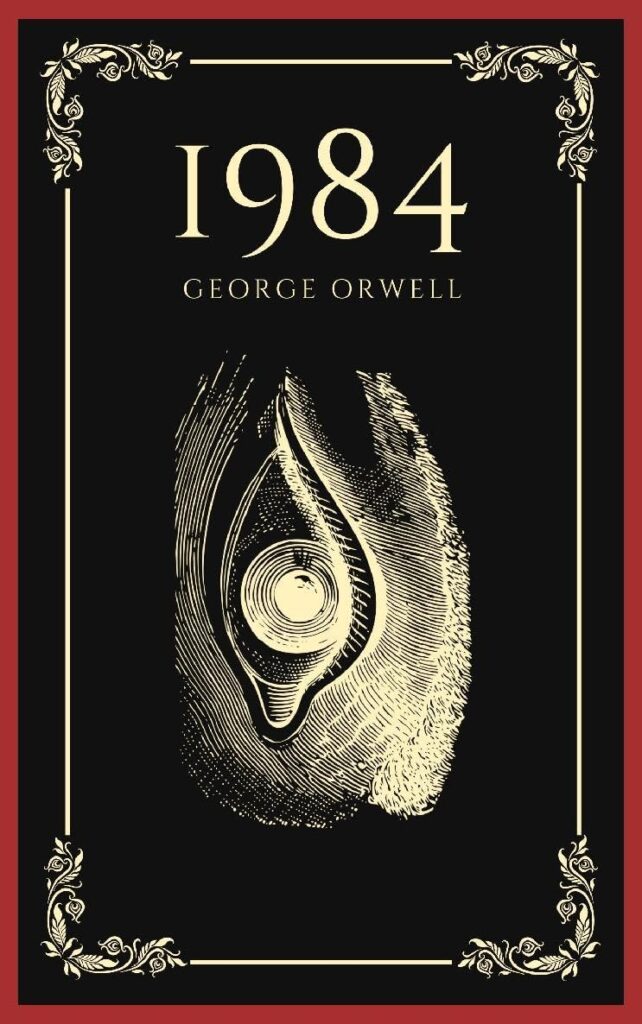
Biblical Example of Man vs. Society Conflict
Thomas: The book of 1 Samuel captures this conflict. The beginning of 1 Samuel says, “The word of the Lord was rare.” The narrator straight out says that God isn’t moving. He’s not talking to people, and the people aren’t listening. It’s so rare that when the high priest sees a woman weeping and praying at the Tabernacle, where people go to meet with God, he doesn’t think she’s having a profound experience with God; he thinks she’s drunk.
By the middle of the book, God is moving so strongly the people begin saying, “Even Saul is among the prophets!”
Samuel’s war against Israelite paganism is a conflict against a culture. It’s fascinating to study. How does a little boy grow up to take on the false worship and call Israel back to worship the one true God?
One of the catalysts that helps is losing the Ark. Tragically, the Philistines get the Ark of the Covenant, the most holy object in all of Judaism. Its absence caused the Israelite culture to change.
Biblical Example of Man vs. Society Conflict
A modern example of man vs. society is Captain America and the Winter Soldier. Captain America is a virtuous super soldier who’s physically stronger than any other human. What kind of conflict do you give that kind of character to test him? You give him a villain he can’t punch.
The perfect villain for Captain America is the secret organization Hydra. Captain America doesn’t know who is good or bad. Hydra is a secret villain hiding in the shadows. He doesn’t have the tools to fight that kind of villain, so he’s forced to find a way to root out this evil from his organization.
It’s a great story that has stood the test of time.
Another example of man vs. society is the story of Cinderella. She’s a poor, low-class woman who’s unloved by her family and wants to marry the prince. What’s getting in her way? It’s not the prince. He loves her. It’s society. That’s a woman-against-society plot.
In romance, you take characters from different social strata or cultures and make them work against society to make their love work.
Angela: In the book I handed in yesterday, I have a heroine and a hero from different social strata. After the great fire of Rome, when society’s conventions collapsed because the city had been decimated, these characters had a night when they came together, and she got pregnant. But once society reestablishes itself, she knows there’s no way he can marry her. He’s a patrician. She’s a plebeian, and plebs and patricians do not mix.
She ends up placing the baby at the Columna Lactaria, where they put babies who needed to be nursed. Sometimes, people would adopt them, sell them into slavery, or even treat them as pets.
She gives up her baby because she knows there’s no hope in the world that she will ever unite with the love of her life because he’s in one social strata, and she’s in another. It’s a woman and man vs. society plot.
Thomas: Much Ado About Nothing has many man vs. society elements. One couple wants to get together, but culture and society keep inhibiting them. They have to work through societal friction while working through their man vs. himself and man vs. man conflict.
You’ll often see more than one type of conflict in stories. In Captain America and the Winter Soldier, Captain America punches plenty of bad guys, so the movie has man vs. man conflict, but it also has man vs. society mixed in.
Working with these primary colors of conflict, you can create a beautiful and riveting picture for your readers.
Third Conflict Couplet: Man vs. His Creation & Man vs. God
Conflict 5: Man vs. His Creation
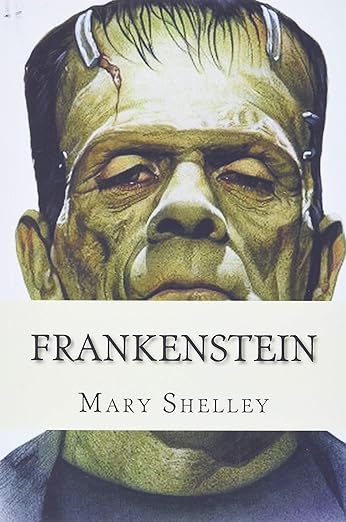
The final couplet plays with the nature of power itself. When I was younger, I used to think there was a new type of conflict that was created with Frankenstein’s monster, which was man vs. his creation. Think of HAL 9,000 and how the AIs we’ve created are destroying us.
But when I became a parent, I realized that man vs. his creation is actually an ancient conflict. The first human beings first created more human beings. The thing about your children is that you can’t kill them, even if you really want to.
Biblical Example of Man vs. His Creation
Thomas: Think of the story of David versus Absalom. Absalom was trying to overthrow David, violating his concubines, and causing people to die. David could have killed Absalom. He was within his rights, but David couldn’t kill Absalom. When Absalom finally dies, David is so sad that he’s at risk of losing the kingdom.
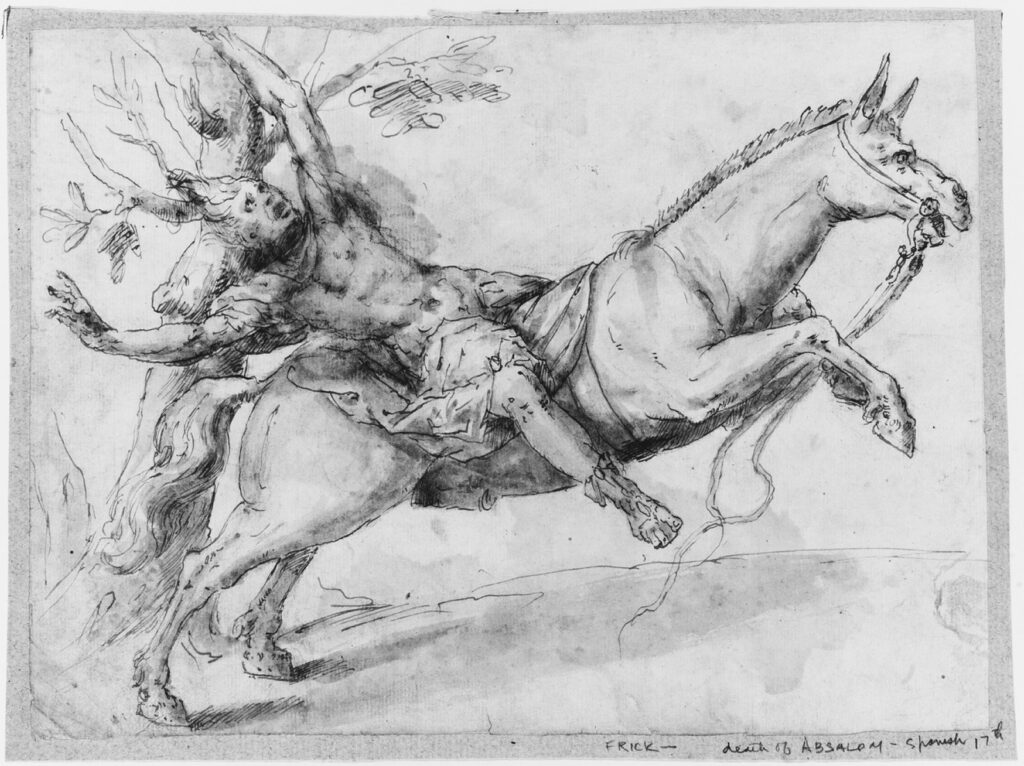
Joab has to intervene and say, “David, you’ve got to celebrate your men, or they will leave you, and you will lose the kingdom.”
From a rational perspective, it’s easy to say, David, you’ve got to do something with this Absalom problem. Absalom was usurping the kingdom right under David’s nose for years.
We have a blindness towards our own creation. They’ve done scientific studies that prove it, and they call it the Ikea Effect.
The Ikea Effect causes us to overvalue furniture that we’ve built ourselves. If you participate in creating the thing, you overvalue it. When you build that stupid bookshelf, you value it more than anybody else does because it has your blood, sweat, and tears in it.
And yet, your creation can turn on you. The son you loved so much can become a villain. The computer program you created to keep the spaceship safe can start to turn on you. Man vs. his creation is an interesting conflict because you deny yourself all the normal tools of fighting a man vs. man conflict.
The scientist could turn off the computer, Dr. Frankenstein could kill his monster, and David could order Absalom to be killed. The conflict is interesting because characters are forced to use the hard responses when the easy responses are removed.
In our own lives, we see the conflict play out when a daughter turns away from the faith and embraces evil practices. As a parent, do I stay true to my religion or follow my daughter into sin? Many people are facing this conflict today in their own families. It’s the most gut-wrenching conflict and is rarely used in stories because it’s the hardest to grapple with. How do you navigate your own love being twisted?
We need to learn to explore it as writers, Christians, and humans because sometimes our creation doesn’t go the way we want it to.
Angela: It’s very hard when you love your child, and they decide to start living a sinful lifestyle that counters everything you’ve taught them and raised them to love. You want to support them because you love them, but at the same time, you can’t support their decisions.
I don’t know a single parent who hasn’t been torn by that. None of our kids are perfect, but when their decision keeps them away from family, that’s a special kind of torture.
Modern Example of Man vs. His Creation
Thomas: Iron Man gets a vision of the future, and he sees Thanos coming to destroy half the universe and cause havoc on Earth. Iron Man gets spooked. He resolves in his heart to create a suit of armor for the planet, to keep Earth safe from this coming disaster.
And he’s right about the coming disaster. Thanos really is that bad, and he really is coming. So, Iron Man creates a computer, Ultron, and a robot that Ultron lives inside of. Ultron decides that, yes, there is a coming disaster, but there’s an even nearer disaster: humanity itself is its own worst enemy. Ultron decides that humanity must be cleansed, so Ultron starts killing people because the only way to save humanity is to abolish it.
Suddenly, the suit of armor Iron Man created to keep the planet safe is about to destroy the planet.
But Iron Man’s other AI, Vision, isn’t bad. It’s a fascinating story about a father figure with good and evil sons—these aren’t actual children—they’re robots. Vision becomes a virtuous and good character, and Ultron has to be destroyed.
I feel like the movie missed an opportunity because, at the end of the film, Ultron is destroyed by Vision, not by Iron Man. I think the ending of the movie would have had a more powerful emotional impact if Iron Man had been the one to destroy Ultron.
But just like David couldn’t kill Absalom, and Dr. Frankenstein couldn’t kill his creation, Iron Man couldn’t do it. Maybe that’s just how it is. Maybe we lack the clarity and courage to do what has to be done concerning our own creation.
Angela: If they had taken Absalom down from that tree and taken him to David, David wouldn’t have killed him.
Thomas: And he would have continued to be a problem.
I think the most uncelebrated biblical character is Joab. He’s a general who does not lose a battle. He is a humble man who gives the glory to David even when he doesn’t earn it.
When Joab is about to take Jerusalem, he sends David a message, saying, “Hey, David, you’ve got to come do this. I don’t want to take the glory from you.”
Joab is the man who knows what needs to be done and is willing to do it even if it’s distasteful. But yet he has a temper problem. It’s a man vs. himself problem. Joab cannot control his temper, and he does evil things as a result. He kills the general of Israel. He kills Absalom. And because of his problem, David uses his dying breath to tell Solomon, “Do not allow Joab to live.”
This dutiful, humble, successful general, who was with David from the beginning and was possibly one of the scoundrels hiding in the caves with David, dies holding onto the altar in the temple.
What a powerful story. Somebody should write a novel about Joab.
His attempts to make politics work are interesting. He’s also one of the few characters in the Old Testament who listens to women.
Several times in Joab’s life, wise women advise him. Unlike most characters in the Old Testament, Joab listens to a wise woman and spares a city. He tries to reconcile David with Absalom because of advice from a wise woman.
Poor Joab gets so overshadowed because he’s surrounded by the far more interesting characters of Solomon, David, the mighty men, and Goliath, but he’s right there, dealing with his own issues, and he dies grasping the altar.
What a way to end a story.
Conflict 6: Man vs. God
Thomas: What’s the opposite of a conflict between a father and a son or an inventor in his invention? It’s us, as creations, fighting against God.
Think of Jacob wrestling with God and Dr. Strange possibly wrestling with Dormammu.
It’s a plot so rare that we’re afraid to use it. It’s the color we’re not coloring with in modern times, so our stories have a hollowness, and everyone can sense it.
How do you write a man vs. God conflict? How do you make God a character in your story?
Angela: It’s hard. My Hebrew teacher told us a story from the Talmud of Honi the Circle Maker. He lived in the intertestamental time just before Jesus. People came to him because he was known as a miracle worker.
There had been no rain during that time, so Honi prayed for rain. He drew a circle and said, “God, I’m going to stand in the circle, and then you send rain.” And he did. In fact, God sent a deluge. There was so much rain that the people came to Honi and said, “It’s too much rain. Go back to God.”
So, Honi looked up to God and said, “Too much! It’s enough! It’s enough!” He was pretty much arguing with God. And he said, “Just a little rain, please. Just a shower,” and God adjusted the flow. My Hebrew teacher pointed out his audacity in speaking to God.
I would be afraid to shake my fist at God and tell him, “Too much! It’s enough!”
I was in one of Don Moss’s writing workshops when he was doing that exercise about things your character would never say, do, or think.
He asked one of the students what her character would never do, and she said, “He would never curse God.”
Don said, “Well, then make him curse God.”
But she said, “Oh, I couldn’t! He would never do that.”
At the time, I thought Job had come awfully close to cursing God. He certainly questioned God about why he was allowing all the tragedy, and he questioned with audacity.
Many of us have said, “Lord, I’ve served you. Why are you allowing these trials to come into my life?”
Biblical Example of Man vs. God Conflict
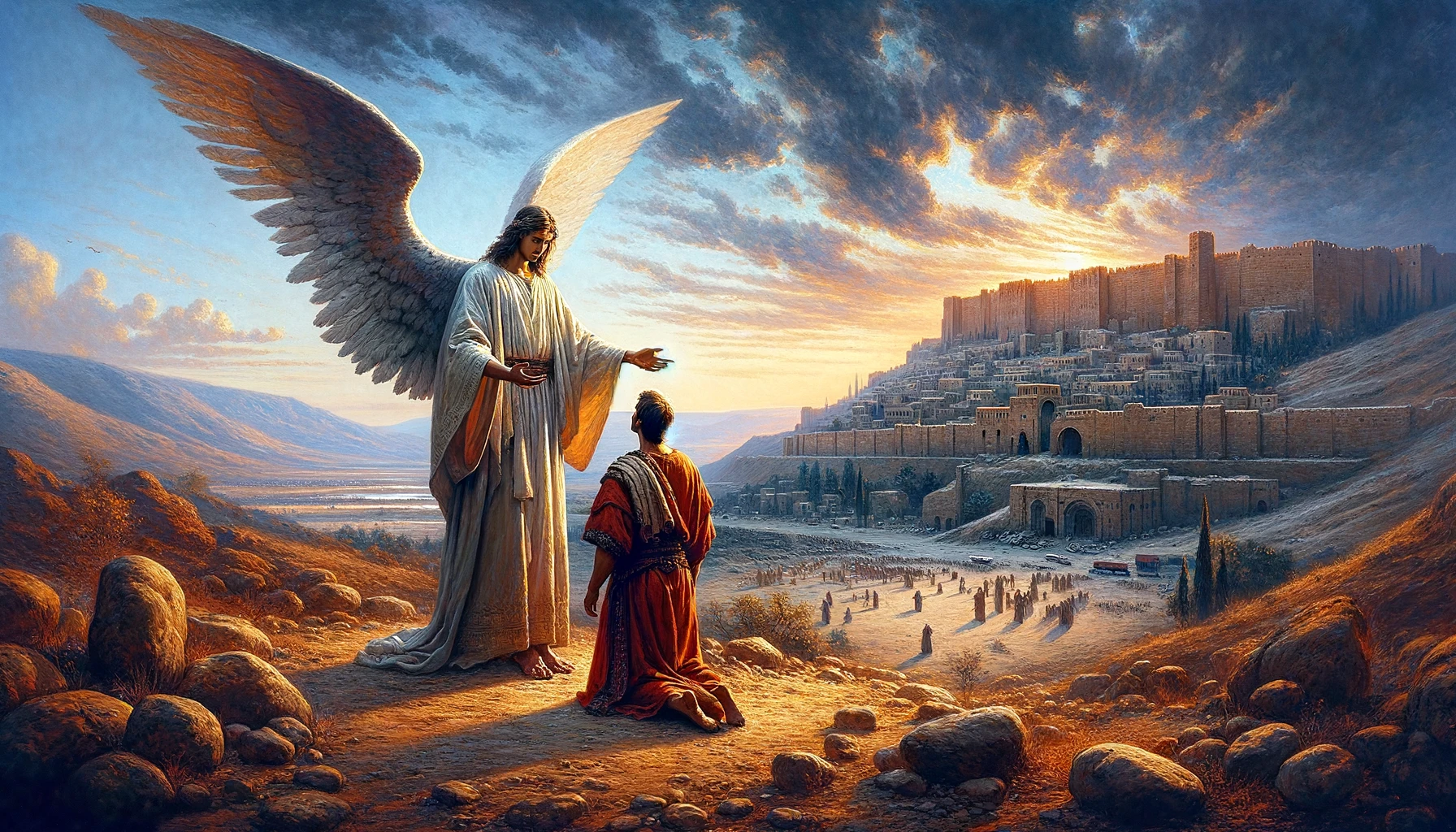
Thomas: Consider how the Old Testament story of Joshua brought God into the story. Joshua, the appointed, anointed one of Israel, was doing what God called him to do. He’s leading the Israelites into the promised land where God has told them to go. Everything is lined up. Before the battle at the walls of Jericho, Joshua goes out for a walk and comes across an angel who is the general of God’s armies.
Joshua has one question for this angel. He says, “Are you on our side?”
And the angel says, “No.” That is the key.
Joshua is an obedient, virtuous leader doing the right thing, and the angel says, “No. I am on God’s side.”
Christian writers are often tempted to put God on their protagonist’s side. But God has his own faction.
Abraham Lincoln made a similar discovery. In his speech, he said, “My concern is not whether God is on our side; my greatest concern is to be on God’s side, for God is always right.”
The South was very clear that they were fighting over slavery, and all the different states stated they were leaving the Union over slavery.
But that’s not why the North was fighting. Maryland and Missouri were slave states, and they didn’t abolish slavery in those states. The North wasn’t fighting for slavery. They were fighting to preserve the Union.
Abraham Lincoln had this realization about being on God’s side, and he shifted his language on the war. Later in the war, he started making slavery an issue for the North as well and said both the North and South should abolish slavery and emancipate all slaves. That shift changed everything.
Abraham Lincoln realized he couldn’t wrestle with God and win. He had to subvert his desires to God’s and take the more virtuous path. God is an immovable rock. Lincoln needed to join God in what God was doing.
On the flip side, you see another story in the Old Testament where God does change his mind because Moses asks him to.
God and Moses are discussing how the Israelites have again failed to believe God and are again complaining. God said he was done with the people, and he was going to start over with Moses.
Moses argued with God but knew he couldn’t change God, so he had to appeal to who God is. Moses says, “Don’t do that, God. You want your name to be great among the nations. What will they think of you if you bring all these people into the wilderness and let them die? The nations will think you couldn’t keep them safe, and it will hurt your reputation.”
Moses begs God to give the people another chance, and God changes his mind.
It’s one of the only times you see that in Scripture. Many people skip over the passage because it’s so difficult for their theology. They can’t believe God could be convinced. But you see God being convinced again when Abraham intercedes for Sodom and Gomorrah.
Modern Example of Man vs. God Conflict
That’s the other way to wrestle with God from your character’s perspective.
To navigate this as an author, I think you have to use The Aslan Protocol. In The Chronicles of Narnia, Aslan is the antagonist.
In most of the stories, most of the time, Aslan’s desires and the children’s desires conflict. Aslan even attacks the children at one point. He tears Erebus’s back open. He tears off Eustace’s flesh! He’s an antagonist, and when you wrestle with God, you rarely win.
Typically, your characters will be up against an immovable force and have to yield.
Angela: I used that in my book, The Pearl. The woman and her husband have a miracle baby, a five-year-old son, who is killed in a freak accident. The mother is a famous radio host, so a group approaches her and offers to clone her son. She’s so desperate to have him back that she goes along with it. She becomes convinced that God was asleep at the wheel when the accident happened, and it’s his will for her to have her son restored.
She pursues this cloning, and her marriage suffers. After a long struggle, she realizes she’s wrong and admits that God wasn’t asleep. As hard as it was to bear, she submits to God and accepts that this was his plan for them.
It’s a serious thing to go against God.
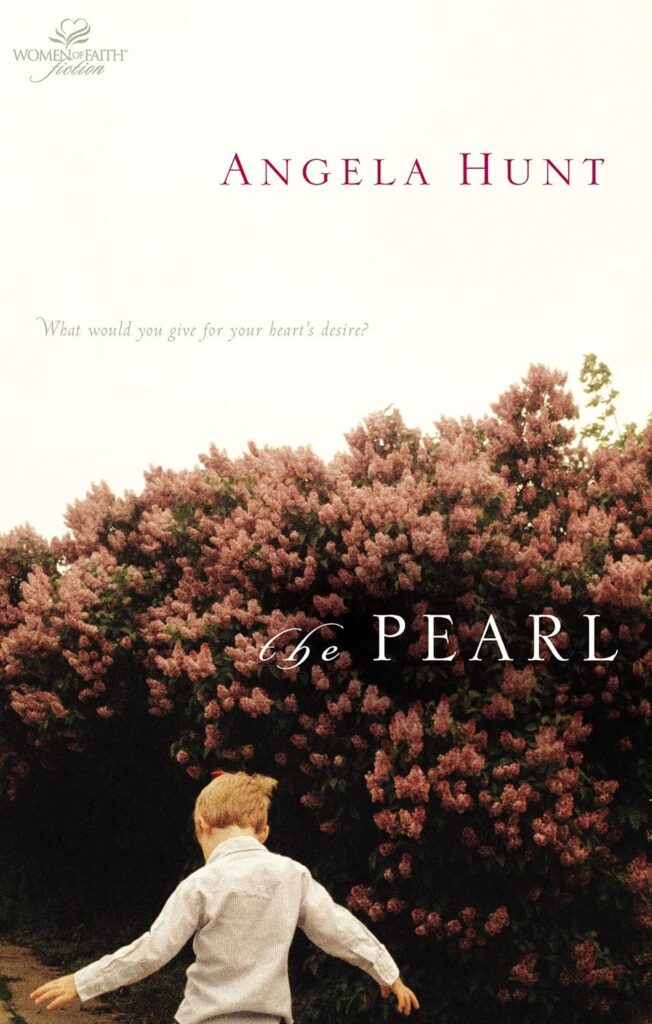
Thomas: God is our antagonist until we surrender to him; even when we surrender to him, he’s still the boss.
As you work God as a character into your book, you have to acknowledge that he is God, and your characters are not. He’s not Santa Claus.
C.S. Lewis includes Santa Claus as a character who helps the children, but he also has Aslan, who has his own purposes. Those purposes are often on another dimension, where his goals and ways are above the children’s.
When the girls walk with Aslan to the stone table, they have no idea what’s happening. Their understanding is so limited. His ways are above our ways, and he’s a bit unimaginable.
The man vs. God conflict is probably the safest to leave out because it’s the easiest to get wrong. Readers can tell right away when you get God wrong because Christian readers know God. They read the Bible, attend church, and have the Holy Spirit, so they will immediately sense if you get God wrong.
The easiest plot conflict in 2024 is man vs. society. We all feel it. But the riskiest is always the man vs. God conflict because you are the god of your book. You create with full power. In your book, you’re omniscient, omnipresent, and outside of time. You can go back and revise chapter one.
It’s difficult to bring God into your story, so sometimes it’s safer not to do it. But if you can do it with fear, trembling, and submission, it becomes timeless.
Aslan is the most interesting character in every Narnia book. We come to love Aslan, even though he’s the antagonist to the children. He’s a perfect example of how the antagonist is not the villain.
Aslan is the antagonist because at the core of many of these stories is a man vs. himself plot, where God advocates for the good, the true, and the beautiful, and we are not. We’re struggling, and he’s fighting against our sinful nature on behalf of our elevated nature. We’re fighting with ourselves because we are fallen, and we are also made in the image of God. Our desire to do good and our desire to do evil conflict.
You cannot take God’s image out of a human being. We will always have his image. Even when we’re sinning, we’re sinning as image bearers, which makes sin so tragic.
As you’re writing your story, work these conflicts in on purpose. You already have conflict in your book, but often it’s incorporated without vision. As you introduce these conflicts on purpose, your books will become clearer and more vibrant and will differentiate themselves from colorless stories.
What encouragement do you have for someone who feels they need to go back and fix the conflict in their manuscript?
Angela: The beautiful thing is that, until a book is published, you can go back and fix it.
Writing is rewriting. It’s constantly working to make your book the best it can be and have the strongest message possible. Nothing is set in stone until it’s set on paper.
Keep working.
Thomas: On my other podcast, Novel Marketing, we have an episode called The Ten Commandments of Book Marketing. It’s one of our most famous episodes, and the ninth commandment is, “Thou shalt not publish thy first book first.” Your first book is for teaching you how to write a book, and it isn’t ready to publish. You learn many lessons the hard way with that first book.
But writing is a profession where you’re judged by your rookie year, as Larry Correa likes to say.
Angela, tell us about the book you wrote to address this problem.
Angela: I wrote a book called My First Novel and What Became of It.
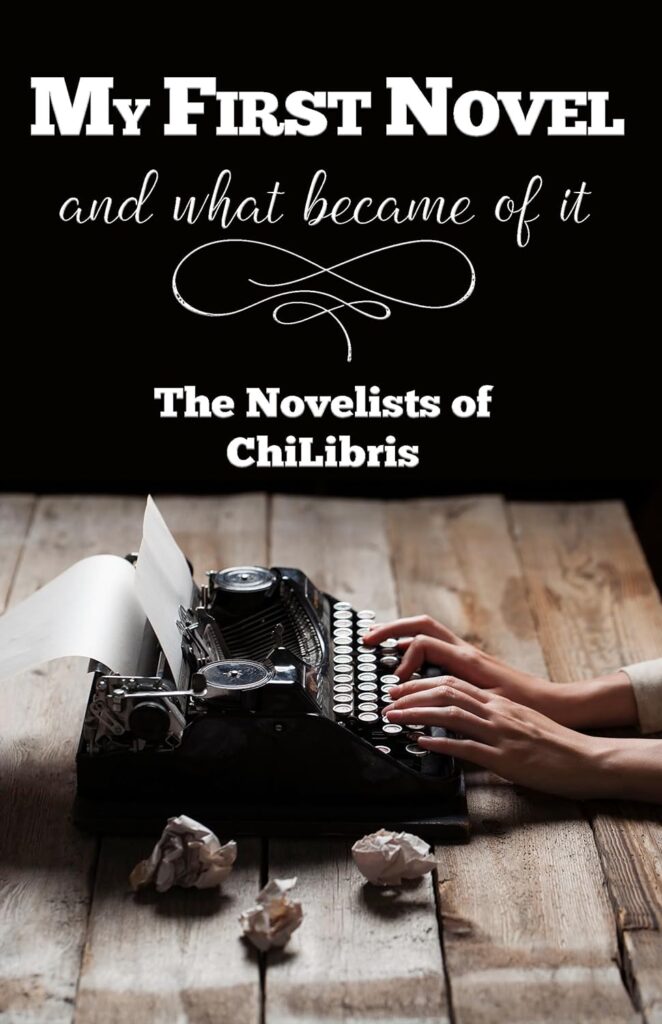
I’m a member of an online Christian writers group, and we were talking about our first novels. Each of us had a different story. I put my first book in a drawer and then tossed it out. Some authors had to rework their first novels, and others carried their novels around for years before they realized what needed to be done.
We compiled all our stories in a book mainly to encourage people. It’s okay to put your first novel in a drawer or revise it or work on it for seven years, as long as you put in the work.
Writing your first book is a learning experience. It’s the one you cut your teeth on. Very few first books are ready for publication, even self-publication, so think carefully before you click that upload button.
Check out Angela’s series of books for writers, Writing Lessons from the Front.
Featured Patron
David Umstattd, author of Pilgrim’s Progress Reloaded.
It’s here! Pilgrim’s Progress Reloaded is finally on paperback and ebook. The Pilgrim’s Progress is a classic story of redemption, allegory, and theological poignance that has profoundly impacted millions of readers over three centuries and changed the landscape of English literature forever.
It’s also a story with a total lack of robots, space marines, or talking platypuses. So David Umstattd fixed that. You’re welcome.
This book is based on the shockingly good Pilgrim’s Progress Reloaded Podcast. The book is surprisingly faithful to the original while taking it to space! If you love Pilgrim’s Progress or want to read about Christian Space Marines, this book is for you.